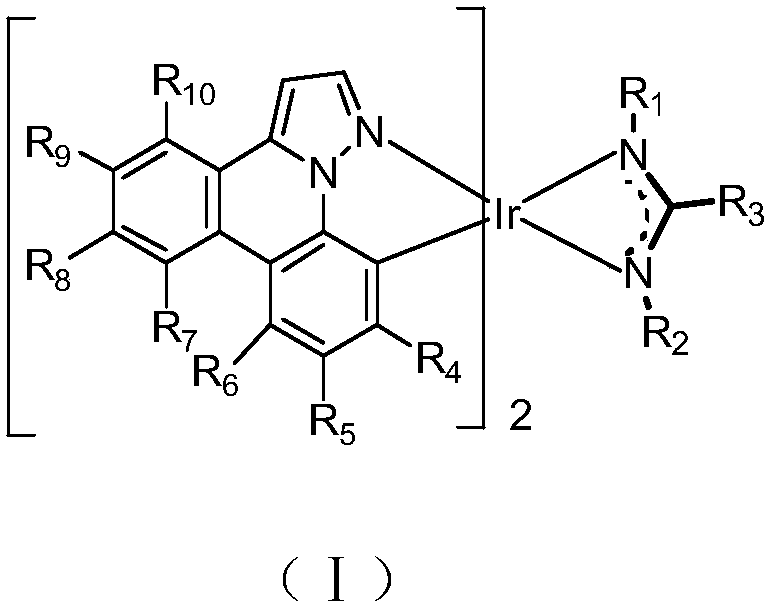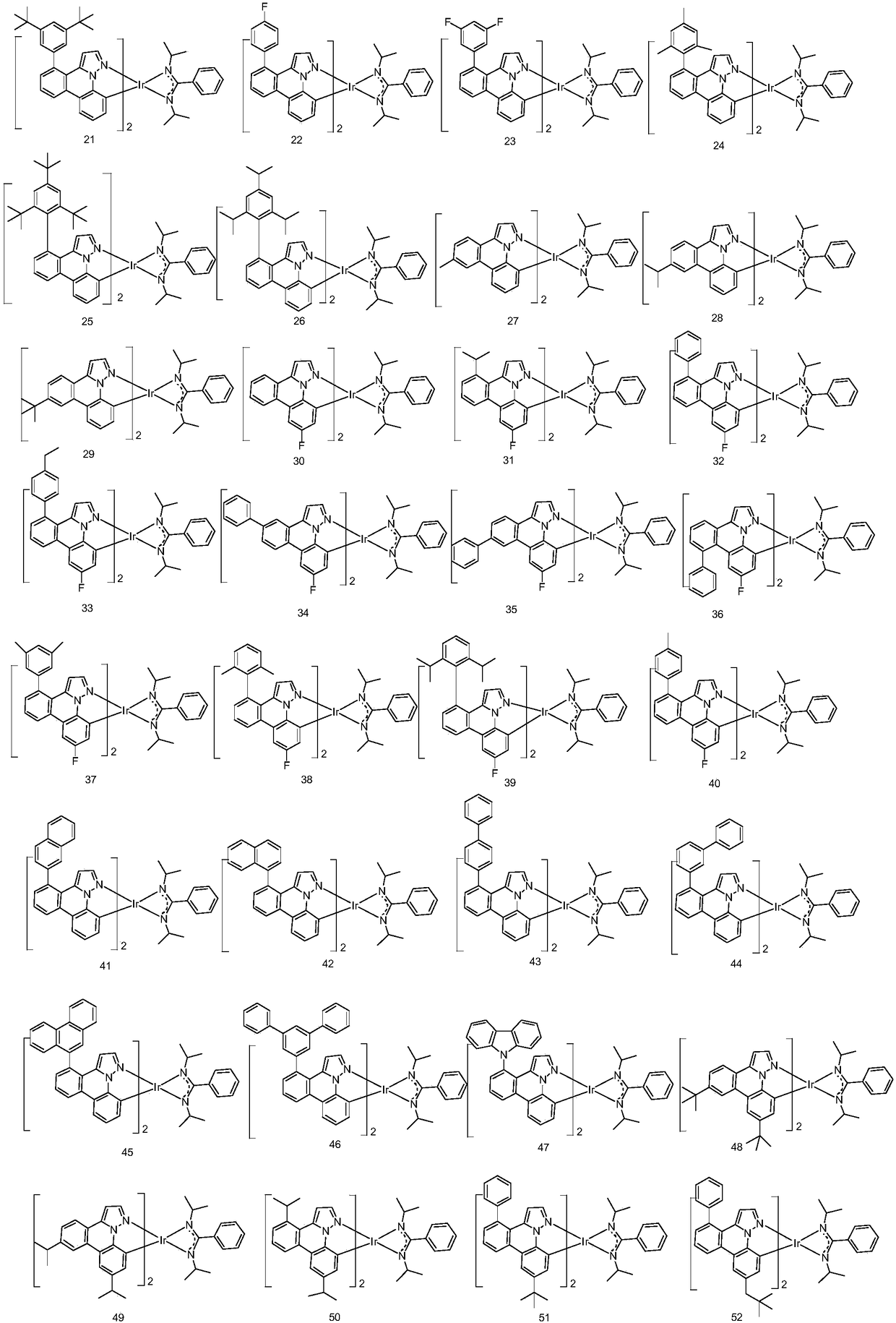Iridium-containing coordination compound and organic light-emitting device thereof
A technology of organic light-emitting devices and iridium complexes, which is applied in the fields of light-emitting materials, organic chemistry, and electric solid-state devices, and can solve problems such as poor thermal stability, low luminous efficiency, and short life.
- Summary
- Abstract
- Description
- Claims
- Application Information
AI Technical Summary
Problems solved by technology
Method used
Image
Examples
Embodiment 1
[0063] Embodiment 1: the preparation of compound 1
[0064]
[0065] Preparation of Intermediate A1
[0066] To a 100ml round bottom flask, sequentially add compound a1 (10.00g, 50.24mmol), DMF-DMA (8.3g, 70.34mmol), toluene (36.6ml) to dissolve, heat at 110°C for 24h, after the reaction, distill under reduced pressure The organic solvent was removed, and column chromatography was performed with ethyl acetate and hexane to obtain compound b1 (11.80 g, 46.43 mmol).
[0067] In the 500ml round bottom flask, add compound b1 (11.80g, 46.43mmol), compound c1 (5.53g, 1.14mmol), Na 2 CO 3 (3.34g, 31.48mmol) mixed with 300ml of methanol and 60ml of water, slowly added dropwise acetic acid to adjust the pH to about 4, heated at 135°C for 24h, after the reaction, extracted the organic matter with ethyl acetate and water, and distilled under reduced pressure The organic solvent was removed, and column chromatography was performed with ethyl acetate and hexane.
[0068] Into a 500m...
Embodiment 2
[0075] Embodiment 2: the preparation of compound 2
[0076] The b1 in Example 1 was replaced by equimolar b2, and the other steps were the same as in Example 1 to obtain the target compound 2 (5.90 g, 30%).
[0077]
[0078]Mass Spectrum m / z: 983.35 (calculated: 983.34). Theoretical element content (%)C 55 h 46 IrN 6 : C, 67.19; H, 4.72; Ir, 19.55; N, 8.55 Measured element content (%): C, 67.19; H, 4.72; Ir, 19.56; N, 8.54. The above results confirmed that the obtained product was the target product.
Embodiment 3
[0079] Embodiment 3: the preparation of compound 12
[0080] The b1 in Example 1 was replaced by equimolar b12, and the other steps were the same as in Example 1 to obtain the target compound 12 (6.19 g, 29%).
[0081]
[0082] Mass Spectrum m / z: 1067.45 (calculated: 1067.44). Theoretical element content (%)C 61 h 58 IrN 6 : C, 68.64; H, 5.48; Ir, 18.01; N, 7.87 Measured element content (%): C, 68.65; H, 5.47; Ir, 18.01; N, 7.87. The above results confirmed that the obtained product was the target product.
PUM
 Login to View More
Login to View More Abstract
Description
Claims
Application Information
 Login to View More
Login to View More - R&D
- Intellectual Property
- Life Sciences
- Materials
- Tech Scout
- Unparalleled Data Quality
- Higher Quality Content
- 60% Fewer Hallucinations
Browse by: Latest US Patents, China's latest patents, Technical Efficacy Thesaurus, Application Domain, Technology Topic, Popular Technical Reports.
© 2025 PatSnap. All rights reserved.Legal|Privacy policy|Modern Slavery Act Transparency Statement|Sitemap|About US| Contact US: help@patsnap.com



